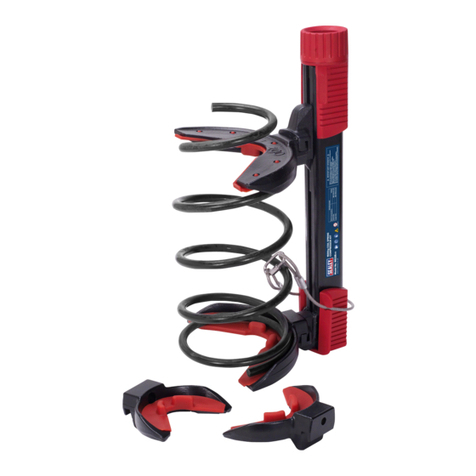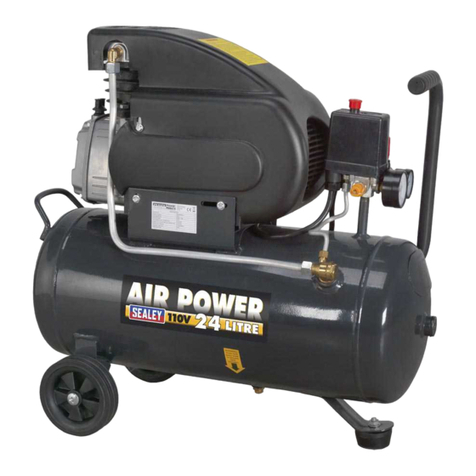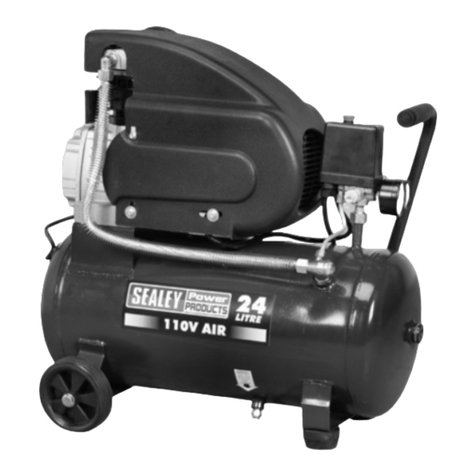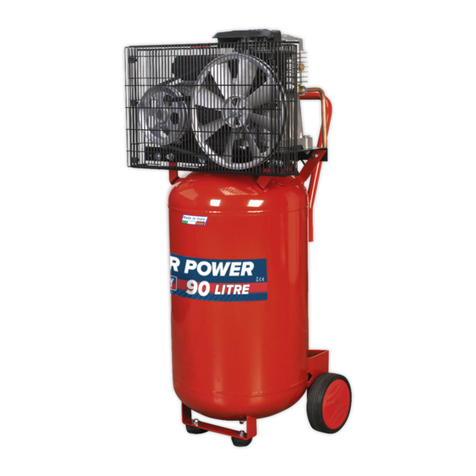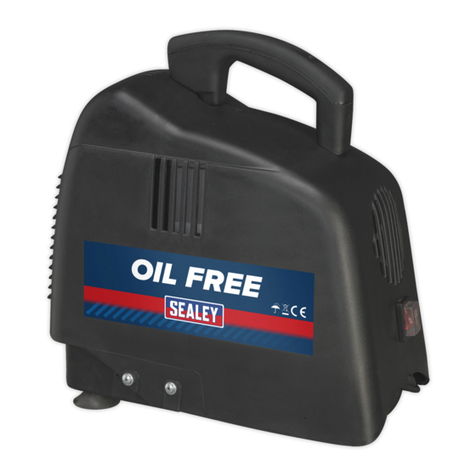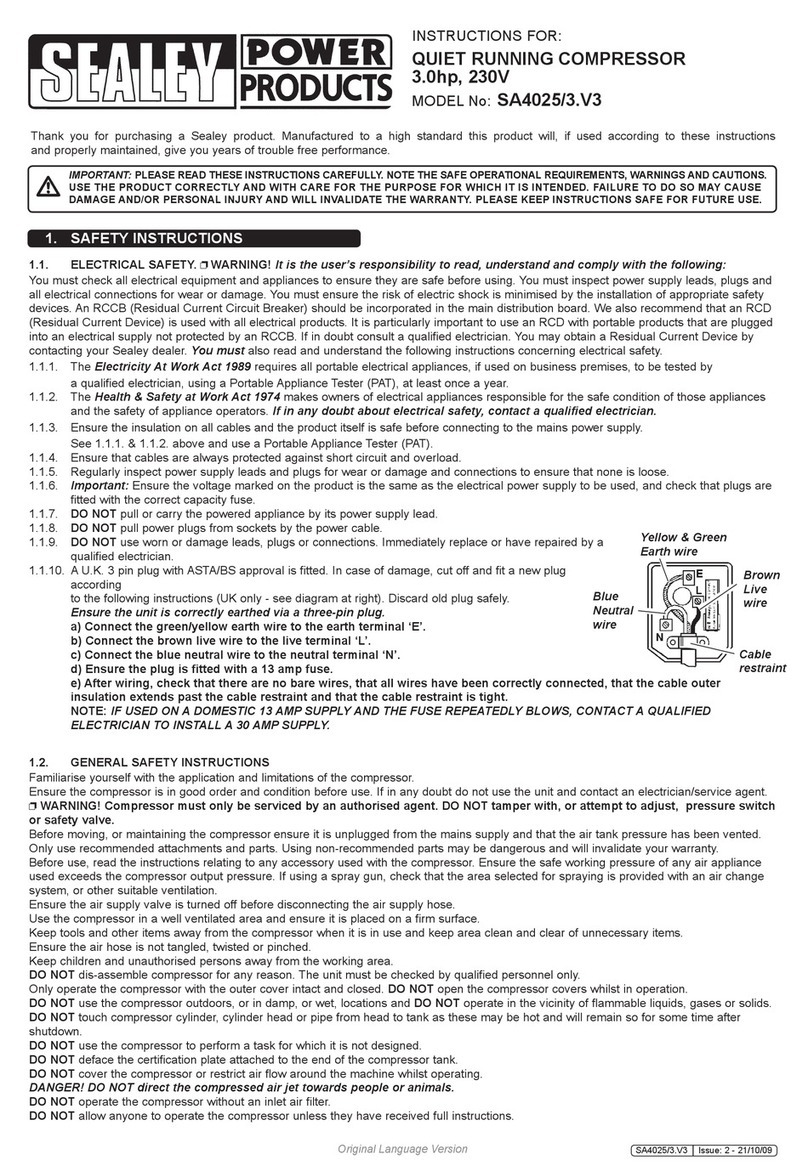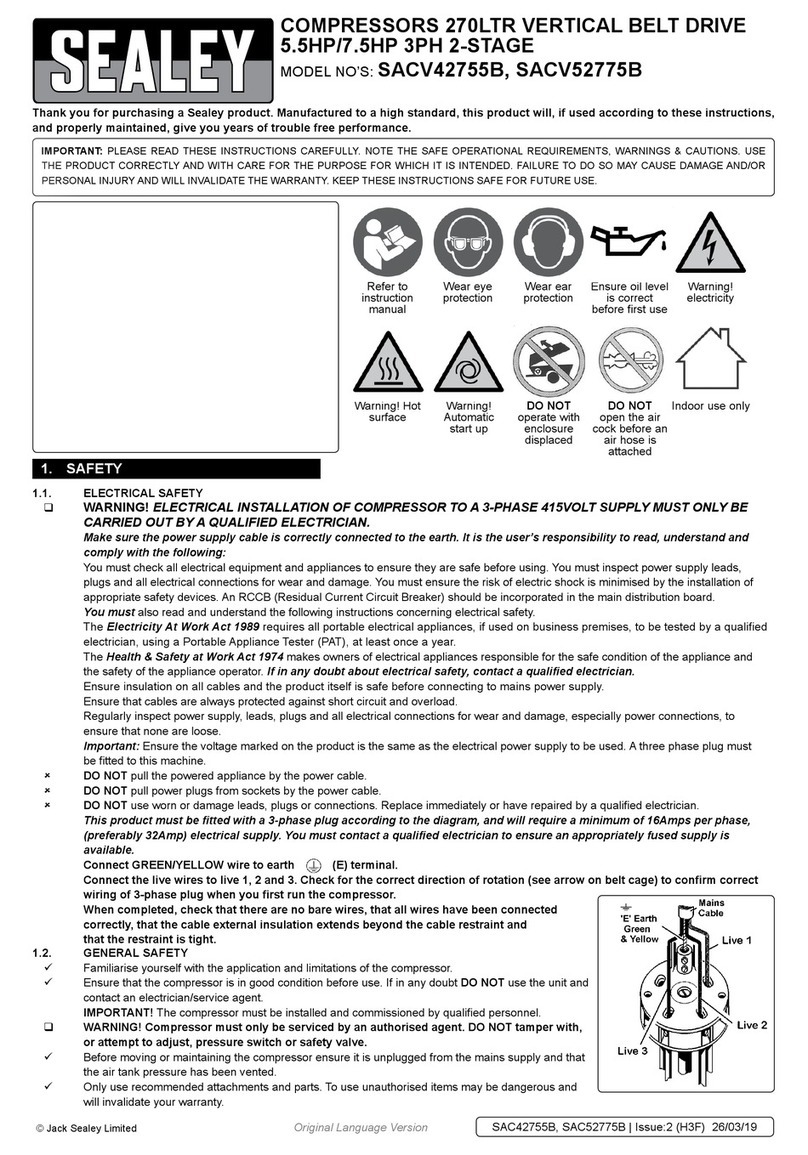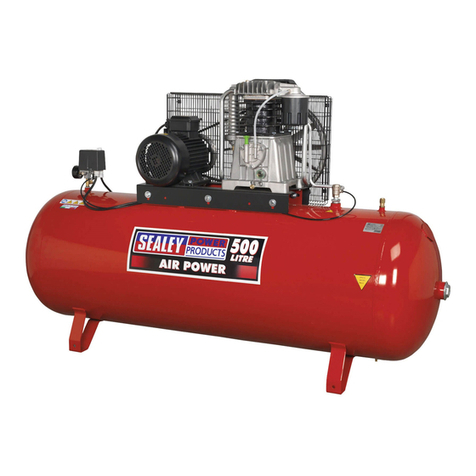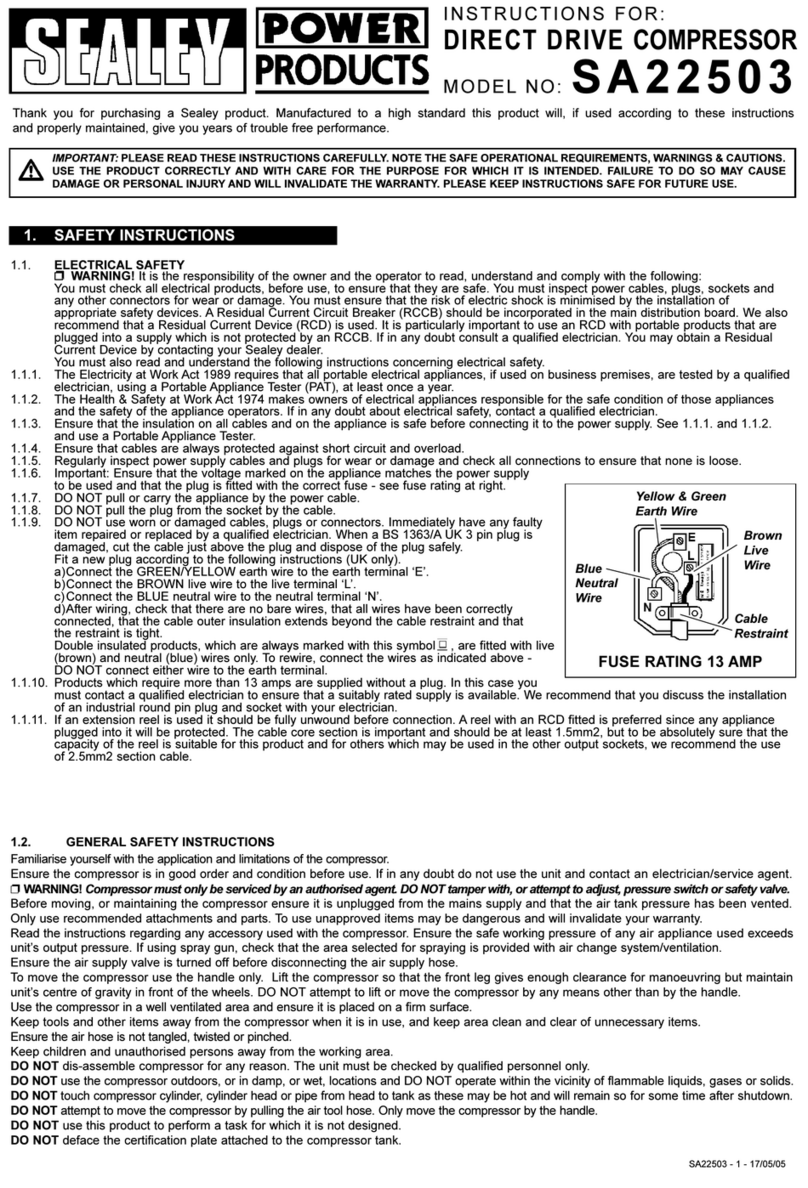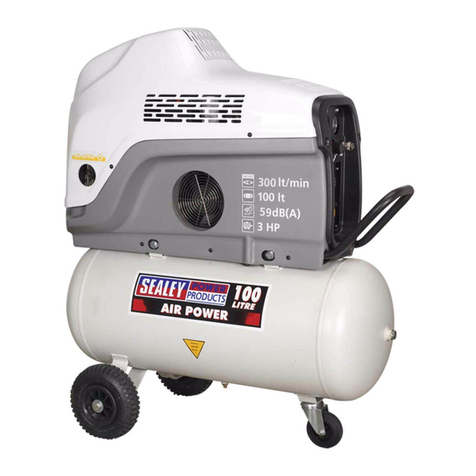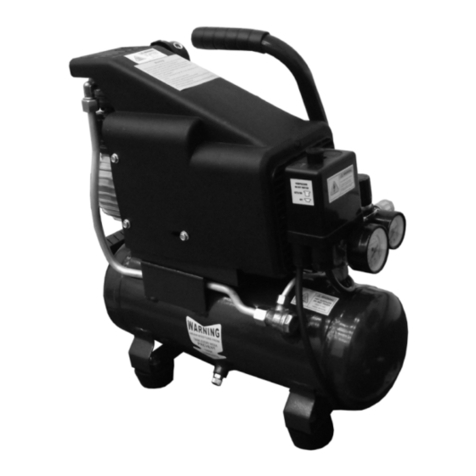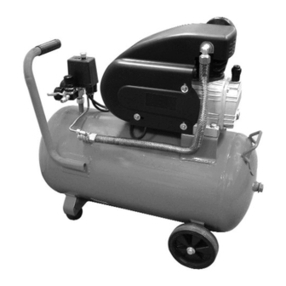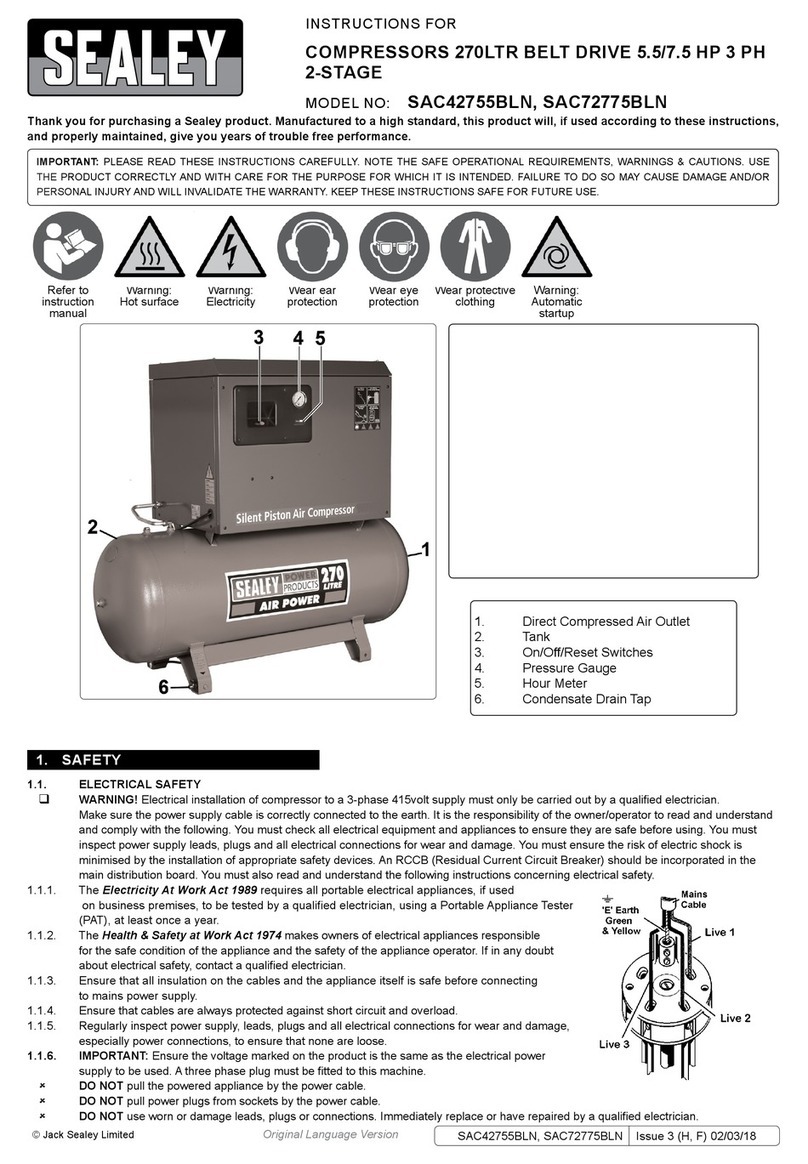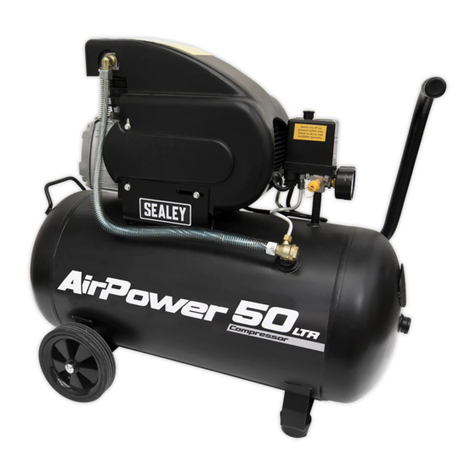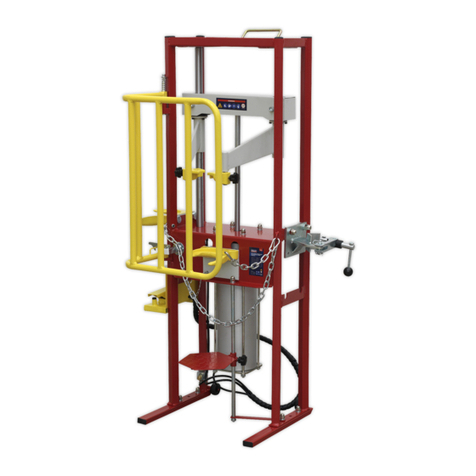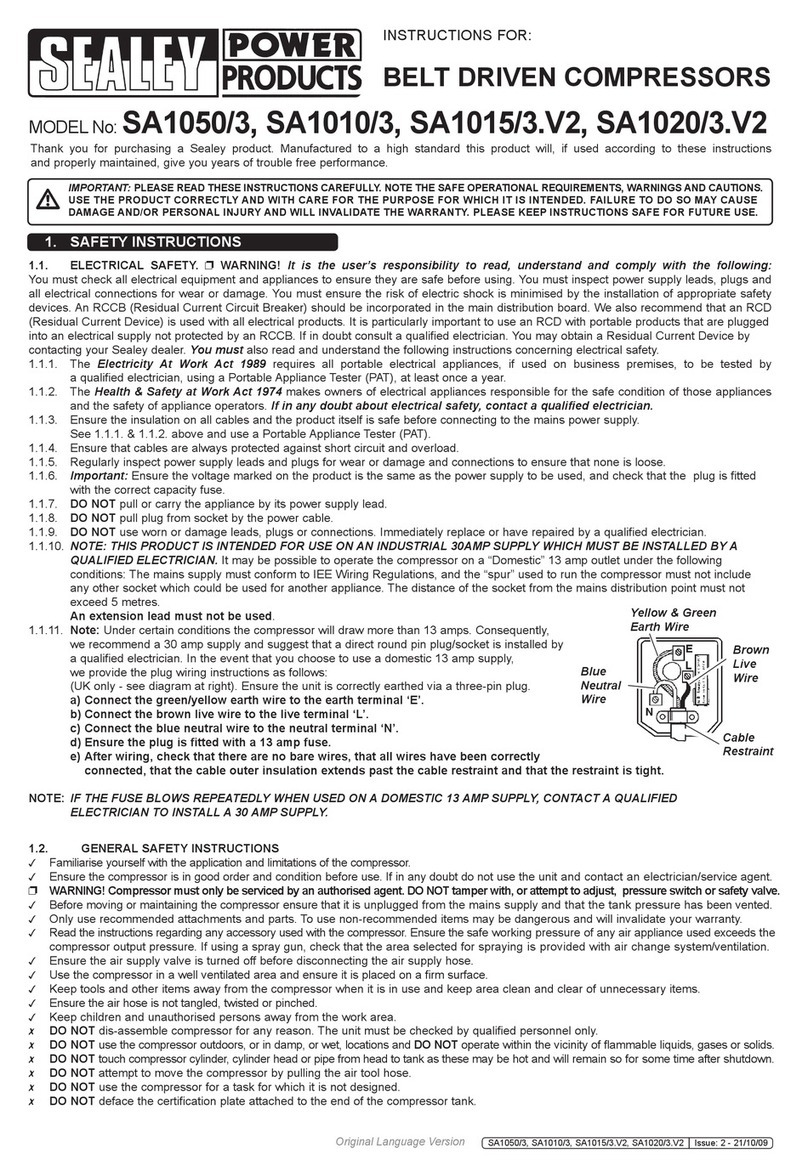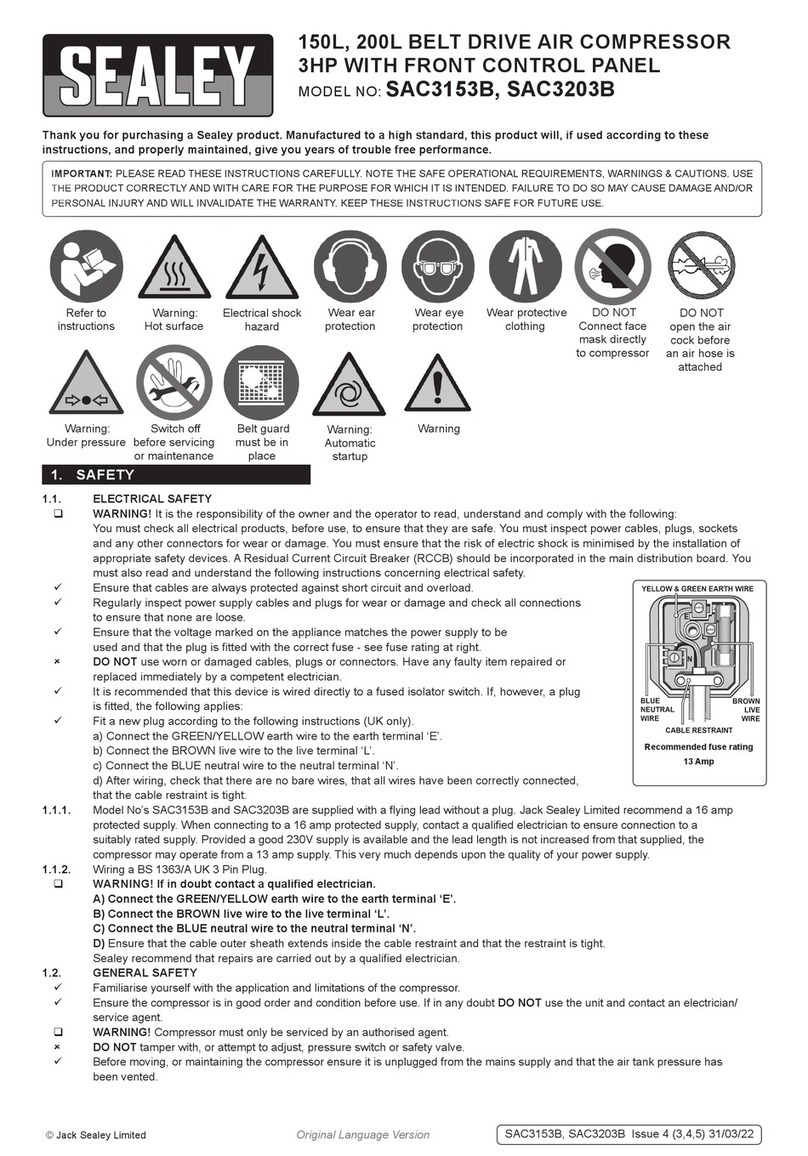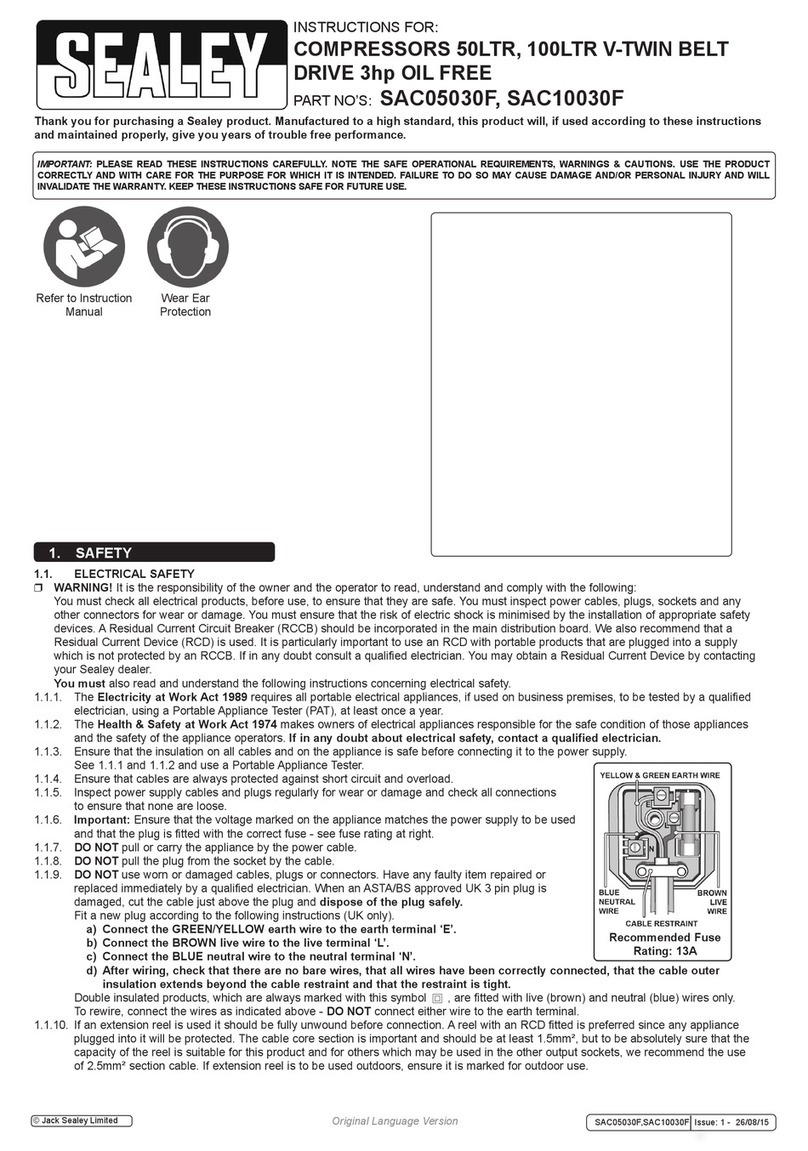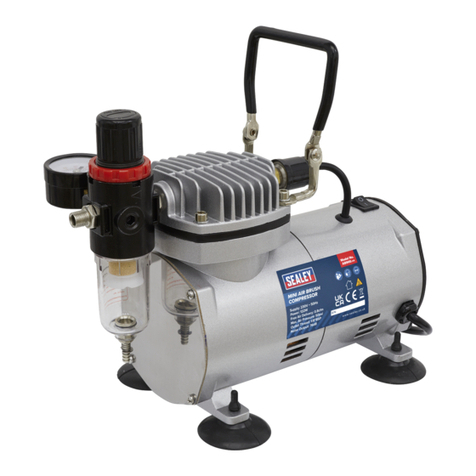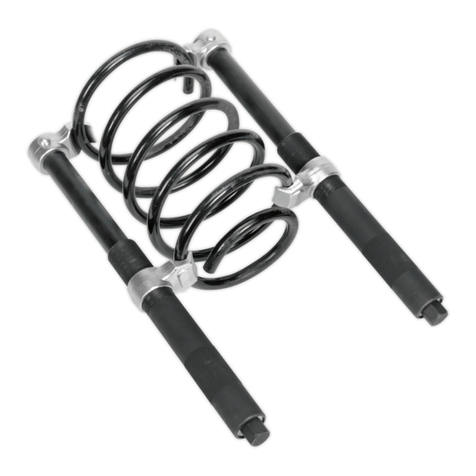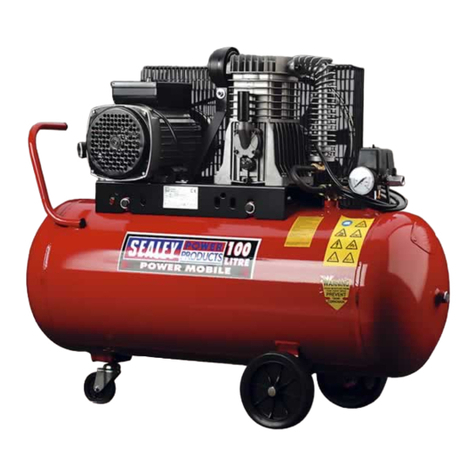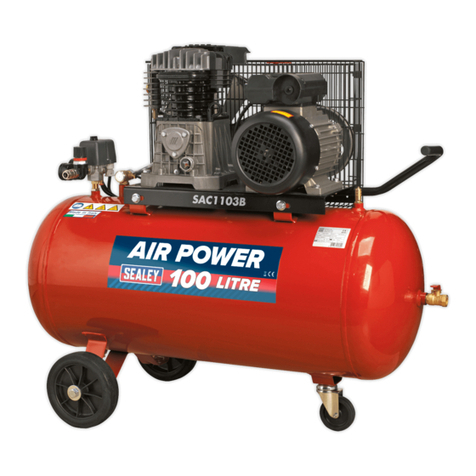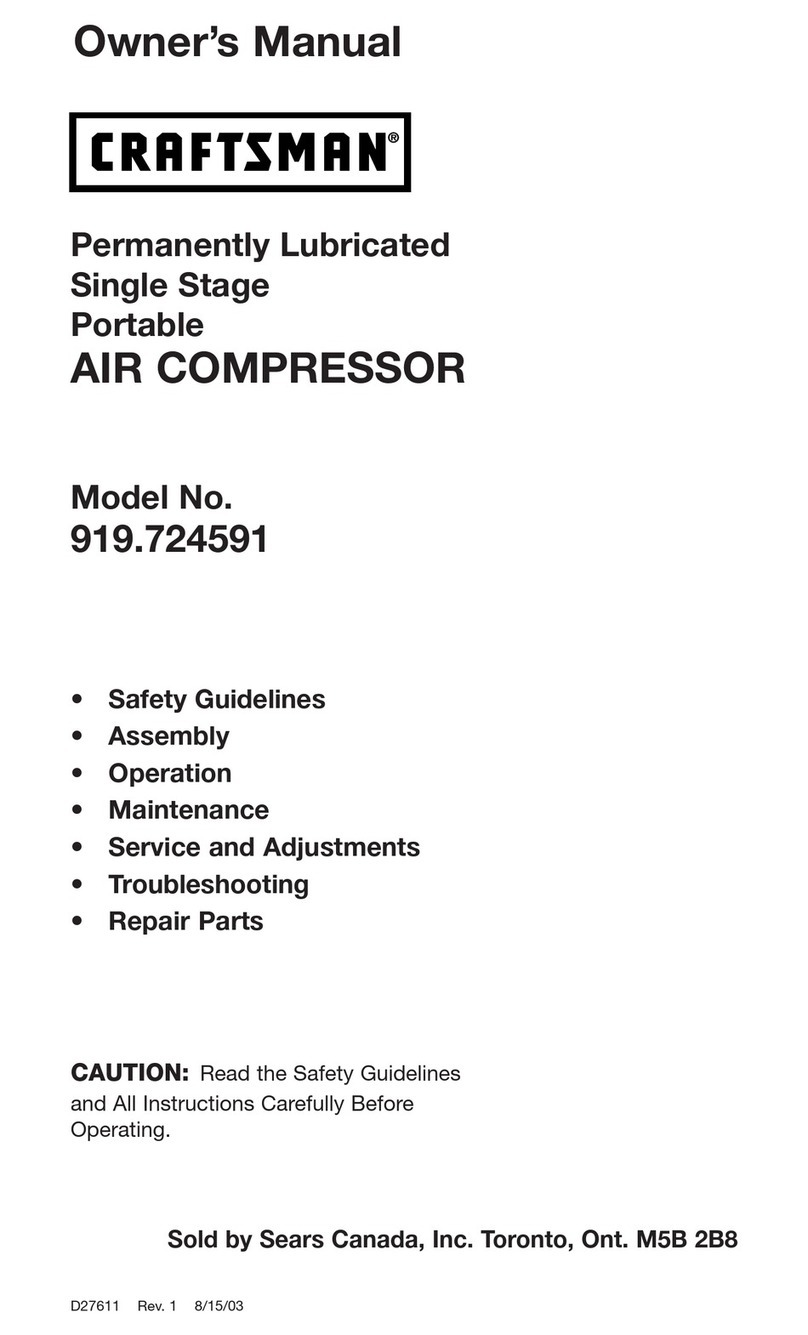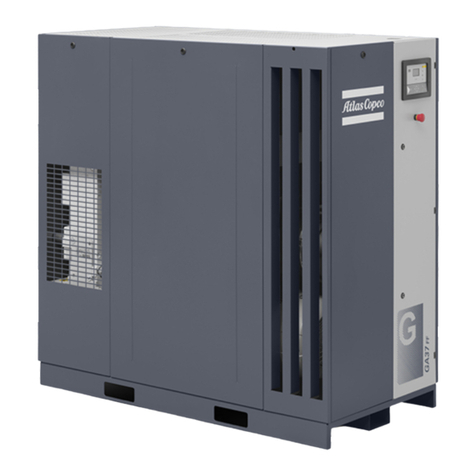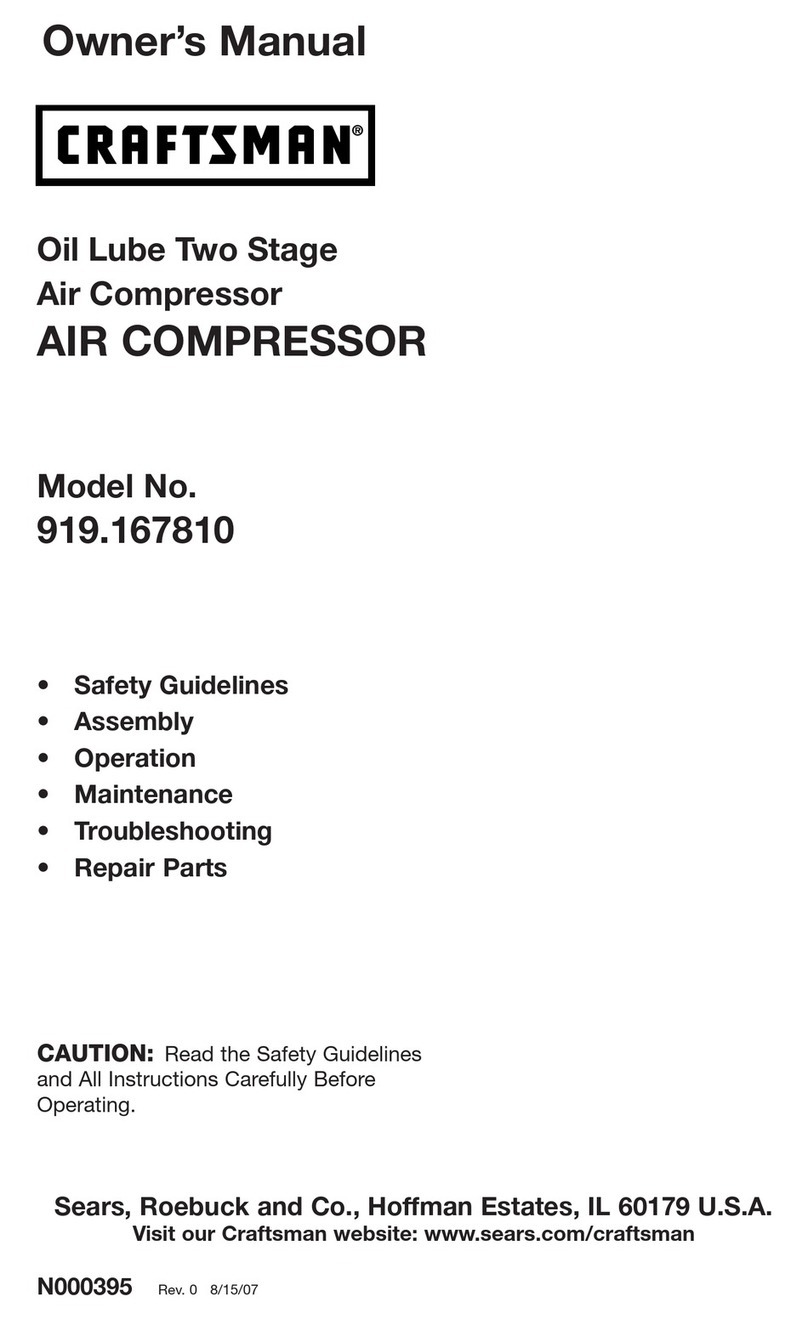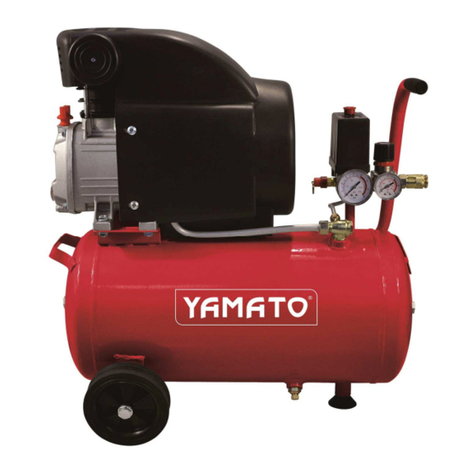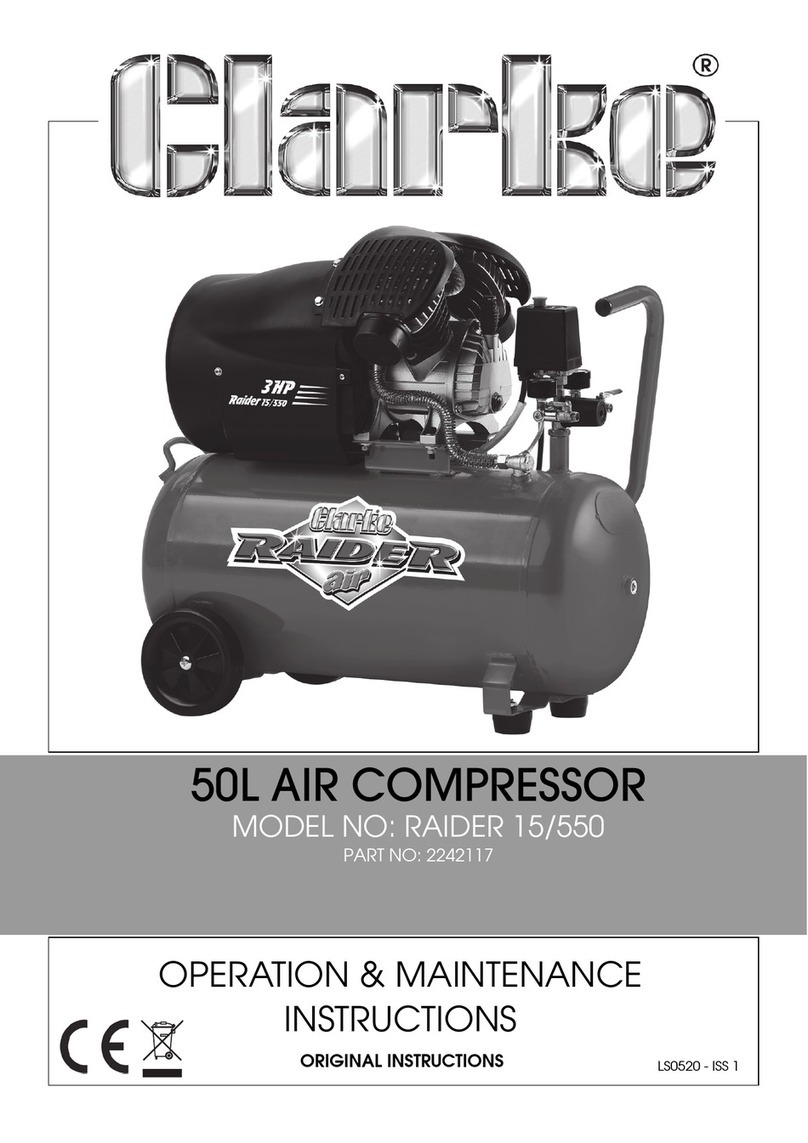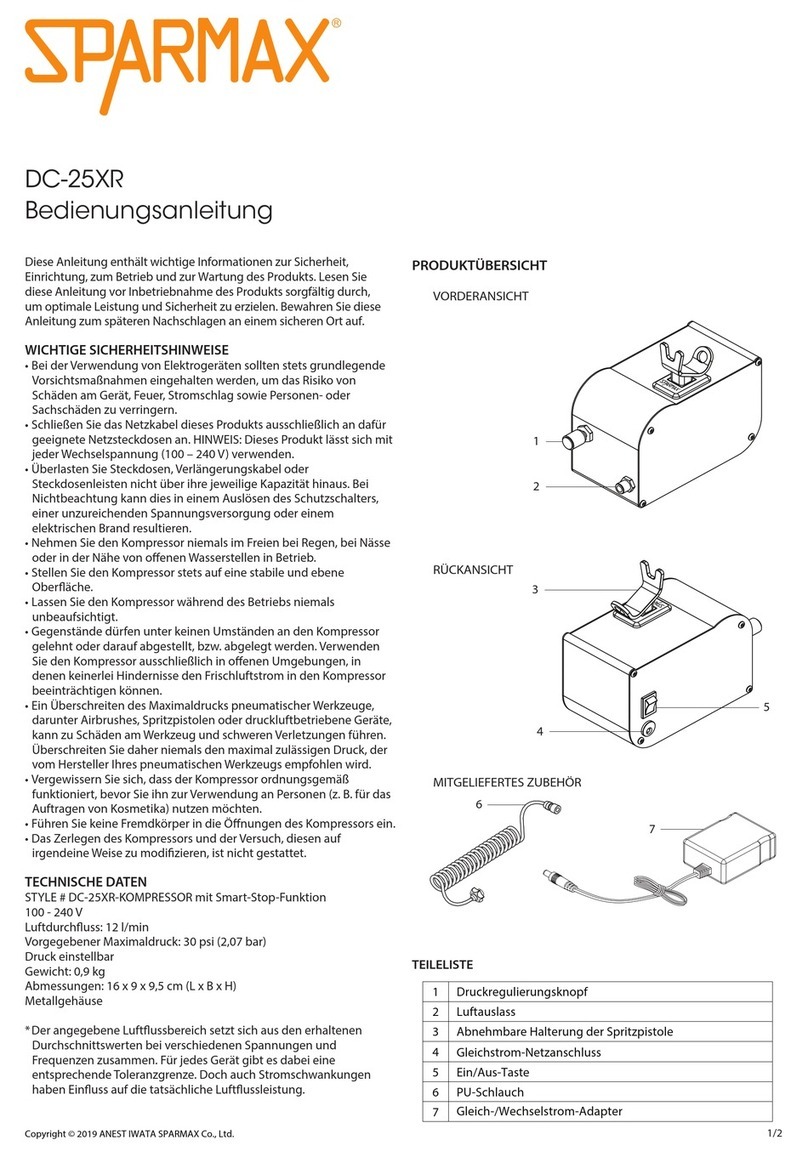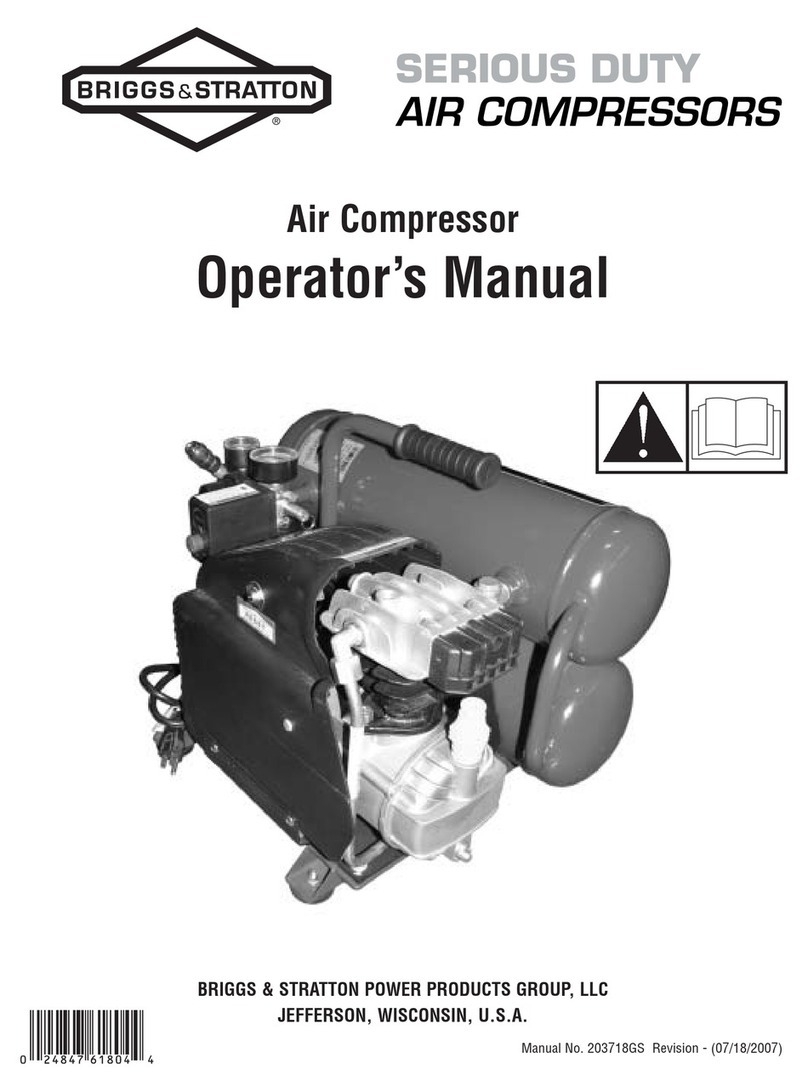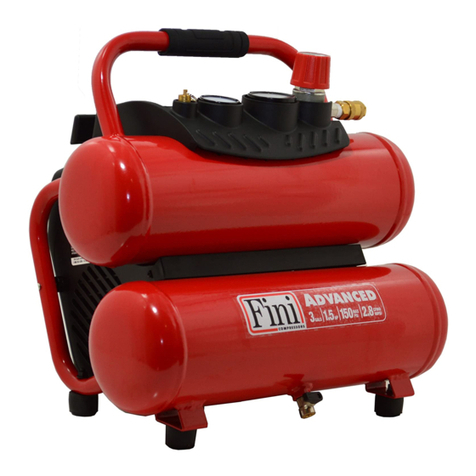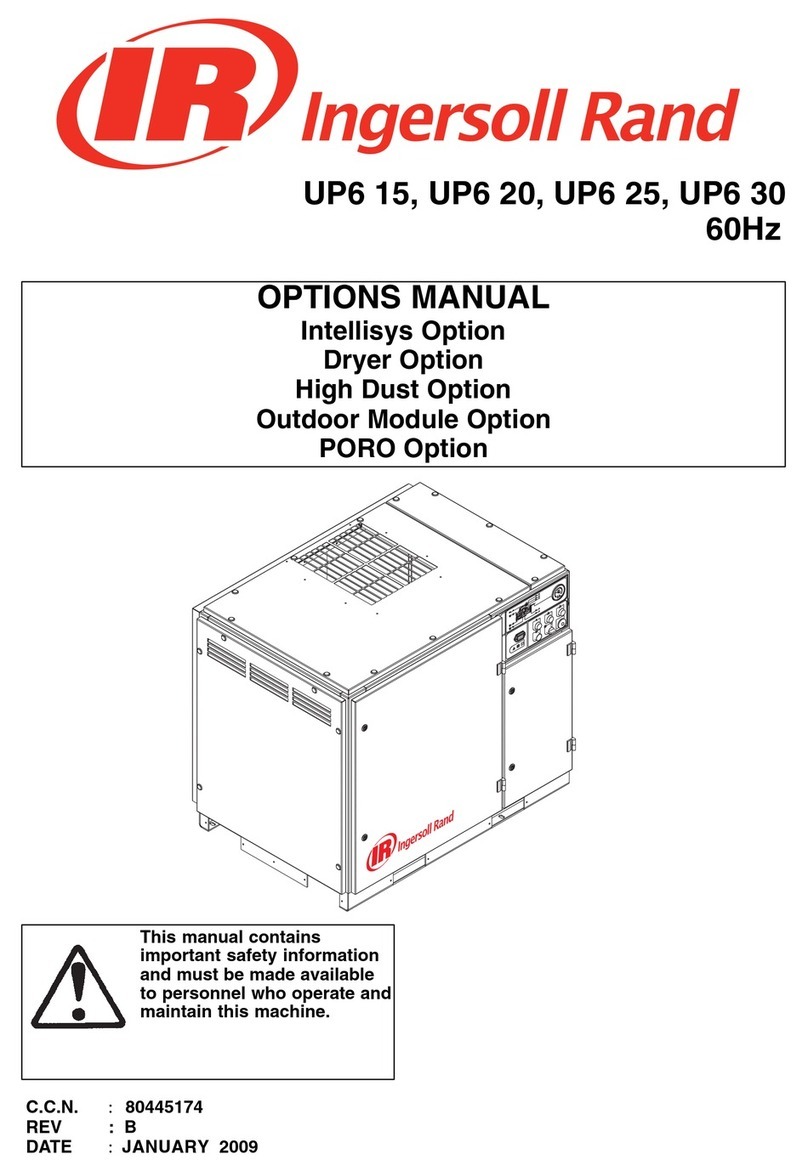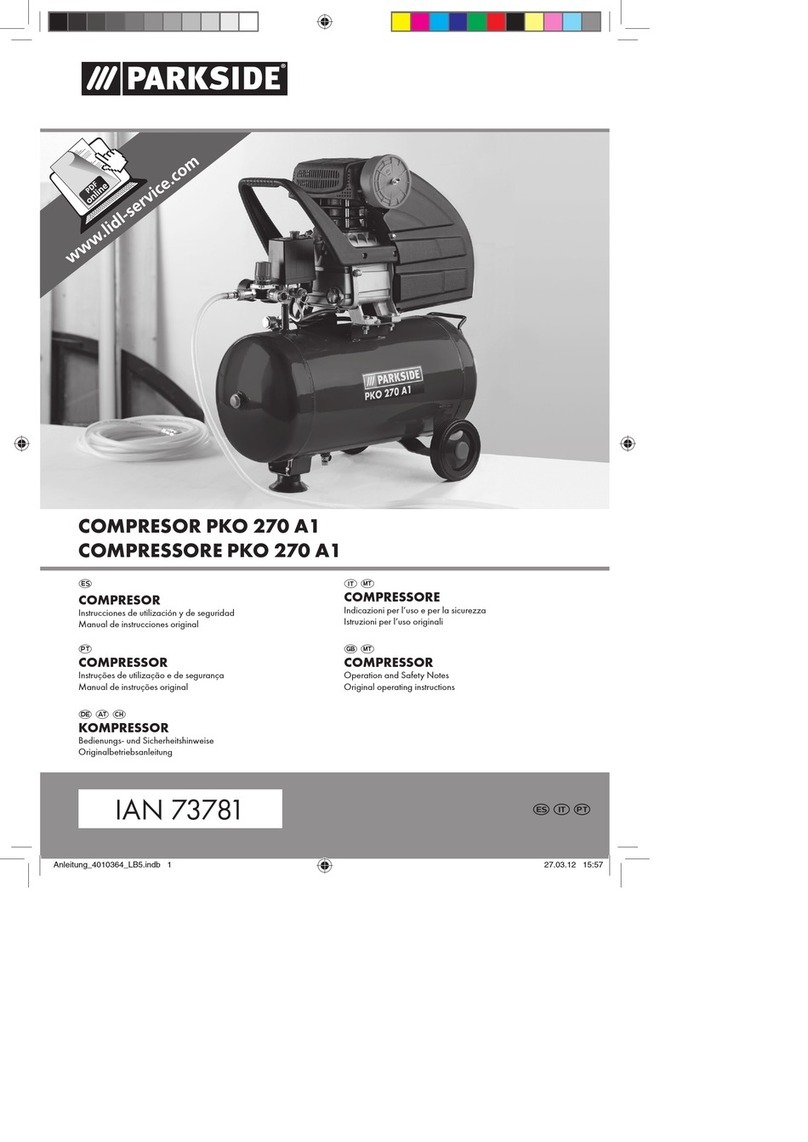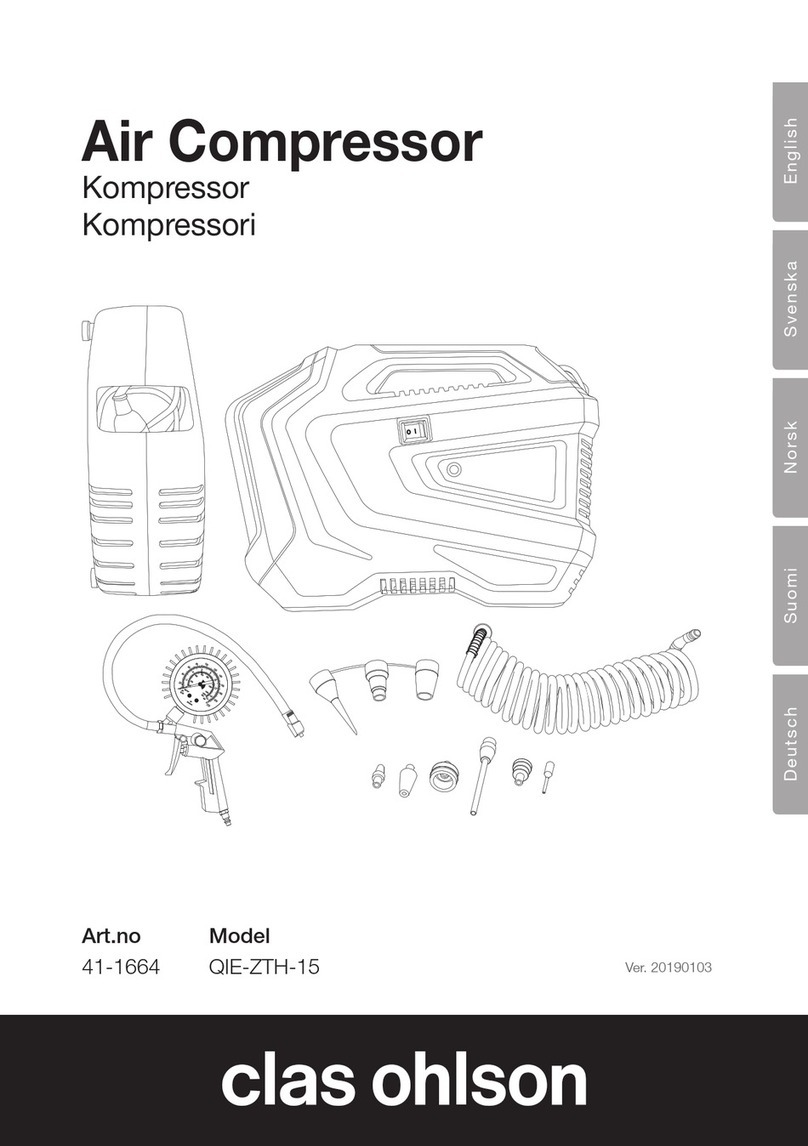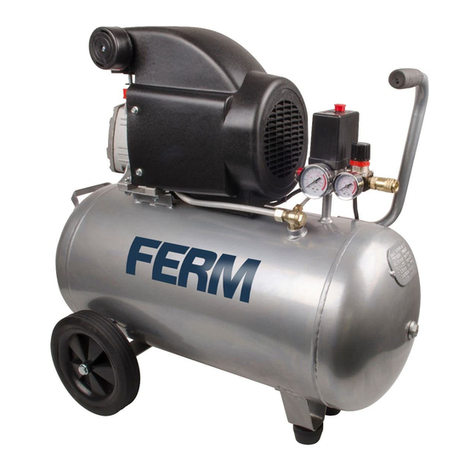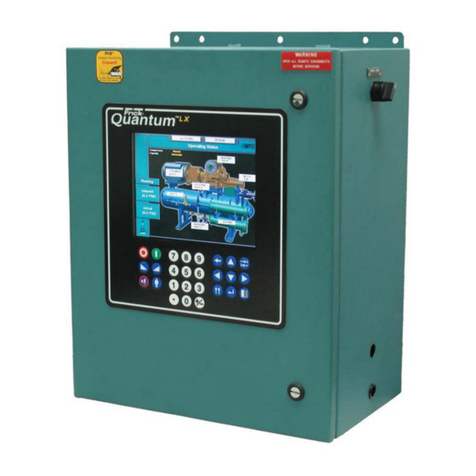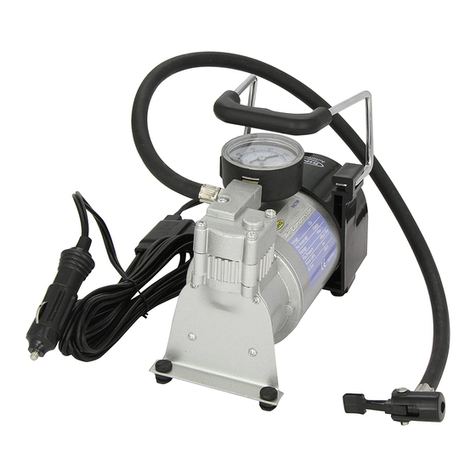
1. SAFETY INSTRUCTIONS
1.1. ELECTRICAL SAFETY
WARNING! ELECTRICAL INSTALLATION OF COMPRESSOR TO A 3-PHASE 415 VOLT SUPPLY MUST ONLY BE
CARRIED OUT BY A QUALIFIED ELECTRICIAN. Make sure the power supply cable is correctly connected to the earth. It
is the user’s responsibility to read, understand and comply with the following:
You must check all electrical equipment and appliances to ensure they are safe before using. You must inspect power supply leads, plugs
and all electrical connections for wear and damage. You must ensure the risk of electric shock is minimised by the installation of
appropriate safety devices. An RCCB (Residual Current Circuit Breaker) should be incorporated in the main distribution board.
You must also read and understand the following instructions concerning electrical safety.
1.1.1. The Electricity At Work Act 1989 requires all portable electrical appliances, if used on business premises, to be tested by
a qualified electrician, using a Portable Appliance Tester (PAT), at least once a year.
1.1.2. The Health & Safety at Work Act 1974 makes owners of electrical appliances responsible for the safe condition of the appliance
and the safety of the appliance operator. If in any doubt about electrical safety, contact a qualified electrician.
1.1.3. Ensure insulation on all cables and the product itself is safe before connecting to mains power supply.
1.1.4. Ensure that cables are always protected against short circuit and overload.
1.1.5. Regularly inspect power supply, leads, plugs and all electrical connections for wear and damage,
especially power connections, to ensure that none is loose.
1.1.6. Important: Ensure the voltage marked on the product is the same as the electrical power supply
to be used. A three phase plug must be fitted to this machine.
1.1.7. DO NOT pull the powered appliance by the power cable.
1.1.8. DO NOT pull power plugs from sockets by the power cable.
1.1.9. DO NOT use worn or damage leads, plugs or connections. Immediately replace or have repaired by
a qualified electrician.
1.1.10. This product must be fitted with a 3-phase plug according to the diagram, and will
require a minimum of 16 amps per phase, (preferably 32 amp) electrical supply.
You must contact a qualified electrician to ensure an appropriately fused supply is available.
Connect GREEN/YELLOW wire to earth (E) terminal.
Connect BROWN wire to L1 (or R1) terminal.
Connect BLUE wire to L2 (S2) terminal.
Connect the BLACK wire to L3 (T3) terminal.
When completed, check that there are no bare wires, that all wires have been connected
correctly, that the cable external insulation extends beyond the cable restraint and that the restraint is tight.
1.1.11. DO NOT use this product with a standard extension cable. Only use an ARMOURED extension cable.
INSTRUCTIONS FOR:
BELT DRIVEN COMPRESSORS
MODEL No's:SA3015/55, SA3020/55 & SA3027/75
Thank you for purchasing a Sealey product. Manufactured to a high standard this product will, if used according to these instructions
and properly maintained, give you years of trouble free performance.
IMPORTANT: PLEASE READ THESE INSTRUCTIONS CAREFULLY. NOTE THE SAFE OPERATIONAL REQUIREMENTS, WARNINGS AND
CAUTIONS. USE THE PRODUCT CORRECTLY AND WITH CARE FOR THE PURPOSE FOR WHICH IT IS INTENDED. FAILURE TO DO SO MAY
CAUSE DAMAGE AND/OR PERSONAL INJURY AND WILL INVALIDATE THE WARRANTY. PLEASE KEEP INSTRUCTIONS SAFE FOR FUTURE USE.
1.2. GENERAL SAFETY INSTRUCTIONS
• Familiarise yourself with the application and limitations of the compressor.
• Ensure that the compressor is in good order and condition before use. If in any doubt do not use the unit and contact an electrician/service
agent.
• IMPORTANT! The compressor must be installed and commissioned by qualified personnel.
WARNING! Compressor must only be serviced by an authorised agent. DO NOT tamper with, or attempt to adjust, pressure switch
or safety valve.
• Before moving or maintaining the compressor ensure it is unplugged from the mains supply and that the air tank pressure has been vented.
• Only use recommended attachments and parts. To use non-recommended items may be dangerous and will invalidate your warranty.
• Read the instructions regarding any accessory used with the compressor. Ensure the safe working pressure of any air appliance used
exceeds the compressor regulator. If using a spray gun, check the area selected for spraying is provided with an air change system or
ventilation.
• Ensure the air supply valve is turned off before disconnecting the air supply hose.
• Use the compressor in a well ventilated area and ensure it is placed on a firm surface away from any heat sources.
• Keep tools and other items away from the compressor when it is in use and keep area clean and clear of unnecessary items.
• Ensure the air hose is not tangled, twisted or pinched.
• Keep children and unauthorised persons away from the working area.
• DO NOT dis-assemble compressor for any reason. The unit must be checked by qualified personnel only.
• DONOT use the compressor outdoors, or in damp, or wet, locations and DO NOT operate within the vicinity of flammable liquids, gases or
solids.
• DONOT touch compressor cylinder, cylinder head or pipe from head to tank as these may be hot and will remain so for some time after
shutdown.
• DONOT attempt to move the compressor by pulling the air tool hose.
• DONOT use this product to perform a task for which it has not been designed.
• DONOT operate the compressor with the belt guard removed.
Original Language Version SA3015/55, SA3020/55, SA3027/75 Issue: 2 - 21/10/09




